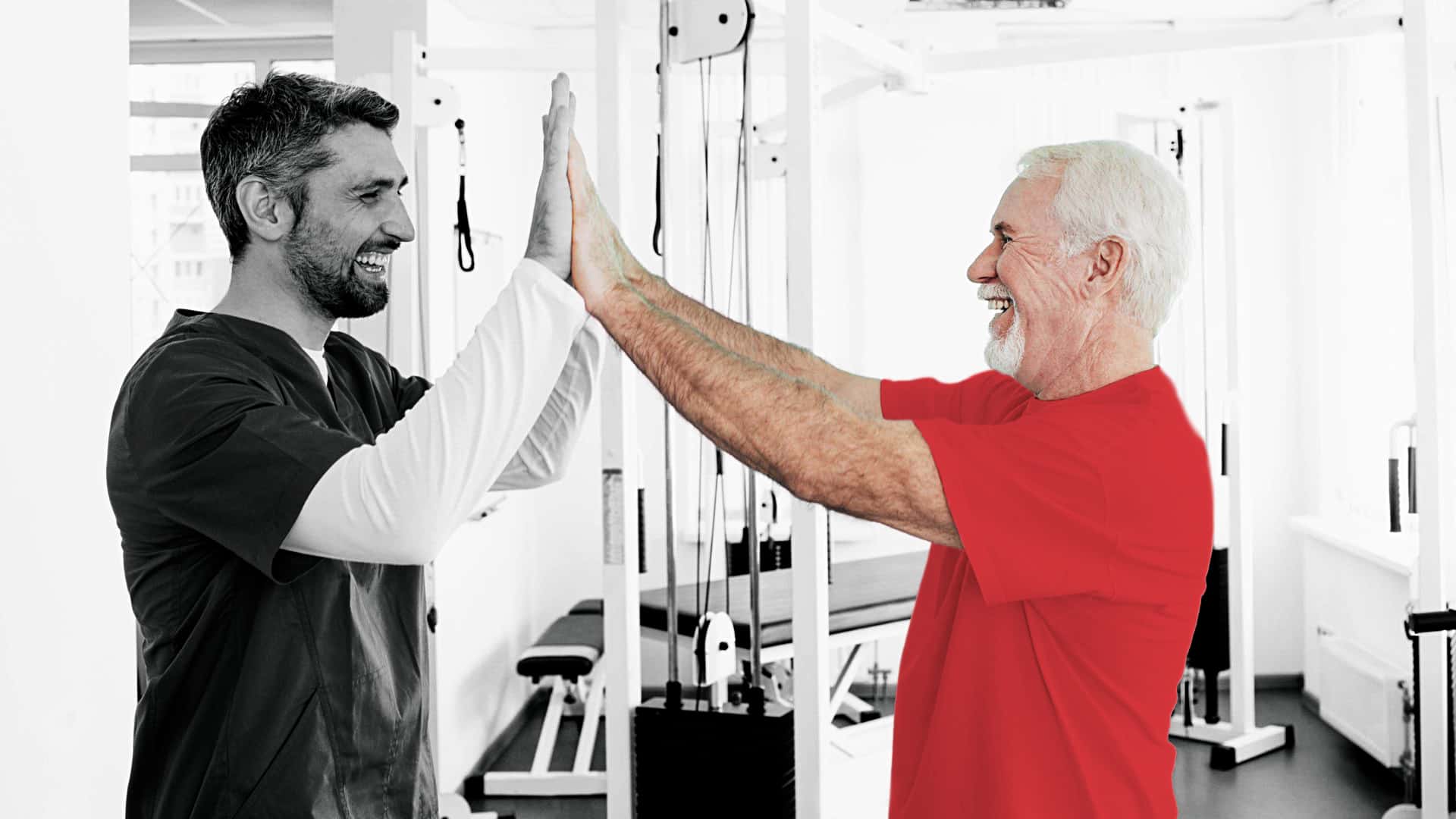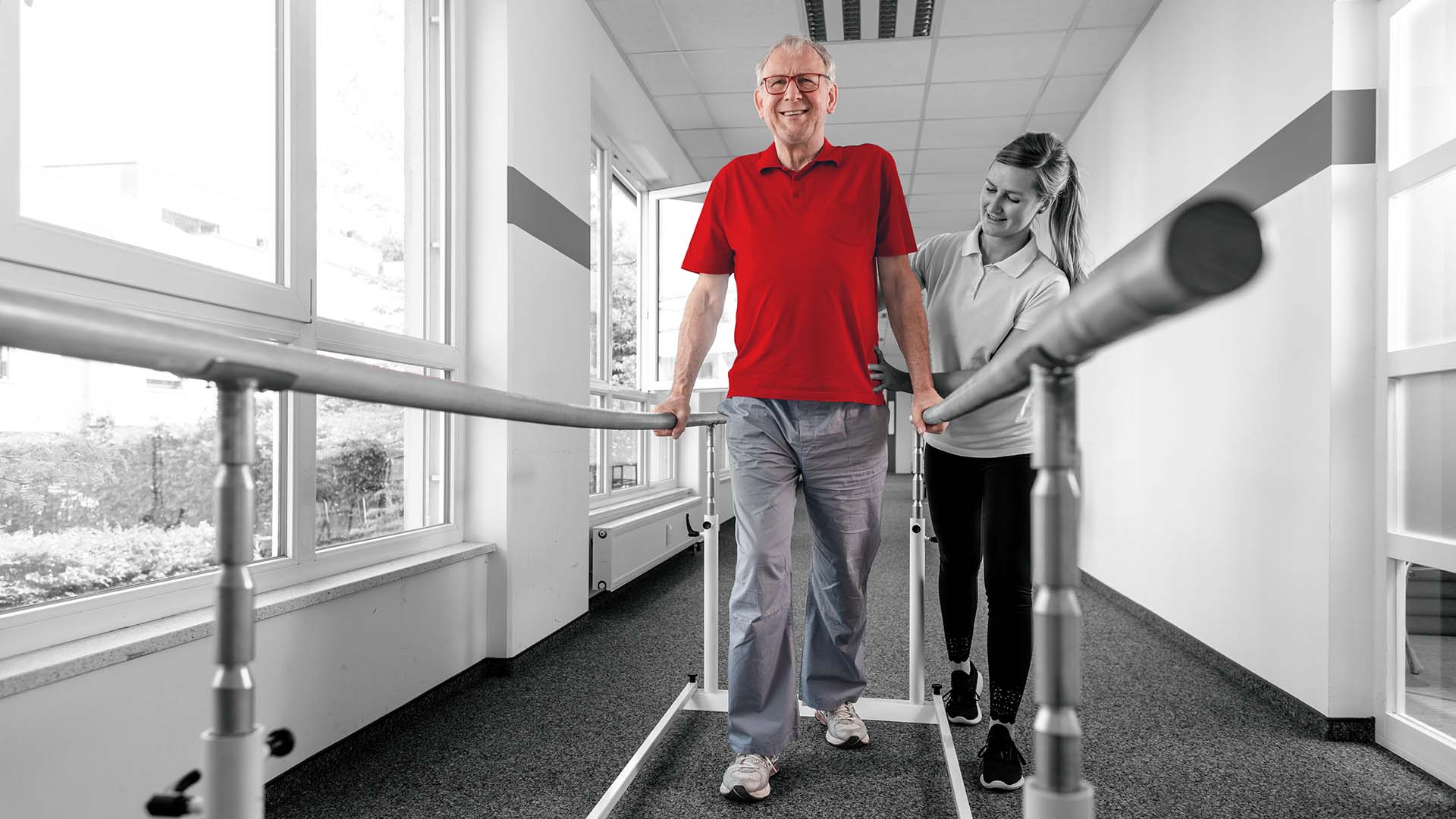Ongoing home exercise and check-ins are essential, with your therapist adjusting your plan over time and helping you stay on track with progress and safety.
Over time, PD affects posture, balance, coordination, and muscle control, making everyday activities harder and more dangerous. That’s where physical therapy becomes essential.
Physical therapists (PTs) are specially trained to help people with Parkinson’s maintain independence and reduce the risk of falls, injuries, and long-term disability. Working with a PT can help you to improve mobility, rebuild confidence, and even slow functional decline.
In other words, working with them is pretty important.
Here’s what you should know about how physical therapists help and how you can make the most of that relationship.
Your Physical Therapist’s Roles and Responsibilities in Helping You Deal with Parkinson’s
Speaking generally, physical therapists assess how Parkinson’s is affecting your movement and design a plan that helps you stay active, mobile, and safe.
This plan often includes:
- Balance training to prevent falls and improve reaction time.
- Gait training using visual or auditory cues (like lines on the floor or metronomes) to improve stride and reduce freezing.
- Strength exercises to prevent deconditioning and keep your muscles working.
- Amplitude-based therapy like LSVT BIG® to help you move more fully and fluidly.
- Aerobic conditioning to boost energy, reduce fatigue, and support mood.
They’ll work with you on these techniques in your sessions, but also teach you how to do them at home, train caregivers on safety, and reassess your progress every few months.
How Often Should You See a Physical Therapist?
How frequently you should see your physical therapist (PT) depends on several things: your stage of disease, your current symptoms, and your individual goals. That being said, here are some general guidelines:
Early Stage (Newly Diagnosed or Mild Symptoms)
Evaluation Frequency. 1–2 times per year for assessment and baseline planning.
Visit Frequency. Periodic sessions (e.g., once a week for 4–6 weeks) to learn exercises and movement strategies.
Goal. Proactive approach to maintain mobility and function, address early symptoms, and delay decline.
Mid-Stage (Noticeable Functional Decline or Gait Issues)
Visit Frequency. 1–2 times per week for several weeks or months.
Reassessment. Every 3–6 months or as symptoms change.
Goal. Improve gait, balance, posture, and prevent falls to optimize your ability to function and your independence.
Late Stage (Advanced Symptoms, Frequent Falls, Severe Mobility Limitations)
Visit Frequency. May require more intensive, ongoing therapy (e.g., 2–3 times per week).
Goal. Fall prevention, safe transfers, use of adaptive equipment, and caregiver education.
Post-Hospitalization or Major Change in Condition
Visit Frequency. Intensive short-term therapy to restore baseline function.
Goal. Rehab after illness, injury, or surgery.
Ongoing Home Exercise & Follow-Up
Ideally, you will also be performing daily home exercises that are designed by your PT. Follow-up visits every 3–6 months help adjust this program based on the progression of your disease.
What Can You Expect from a Typical Physical Therapy Session?
Your typical physical therapy session should be structured to address both motor and non-motor symptoms, with the goal of improving your mobility, safety, and overall quality of life.
Here’s what you can generally expect:
1. Baseline Check-In
Medication Timing. The therapist may ask about your last dose to tailor the session to your “on” or “off” periods.
Symptom Review. Any recent falls, changes in walking, stiffness, or fatigue will be noted.
Vitals/Wellness. Blood pressure, heart rate, and energy levels may be checked, especially before exertional tasks.
2. Gait and Balance Training
Walking Drills. You’ll practice walking with bigger steps and arm swings to improve stride and posture.
Cueing Techniques. You may use visual (floor lines), auditory (metronome or clapping), or tactile cues to reduce freezing and shuffling.
Dual-Task Exercises. These include things like walking while counting or carrying an object to simulate real-life challenges.
3. Strength and Mobility Work
Resistance Exercises. Focused on leg and trunk muscles to improve stability and prevent falls.
Range-of-Motion Movements. Gentle stretches and mobility drills to reduce rigidity and stiffness.
4. Balance Exercises
Static Balance. Standing on one leg or a narrow base to improve control.
Dynamic Balance. Stepping in different directions, navigating obstacles, or responding to gentle pushes (perturbation training).
5. Amplitude-Based Training (like LSVT BIG®)
Making Large Movements. Exaggerated full-body motions to recalibrate the brain’s perception of movement size.
High Repetition. Tasks are repeated with intensity to reinforce new motor patterns.
6. Functional Tasks
Practicing getting up from a chair, turning, or walking through doorways to build real-world confidence and skill.
Average session length is 45-60 minutes.
What Parkinson’s-related Questions Are Good to Ask Your Physical Therapist?
You can get more from therapy by asking the right questions. What are those questions?
Here are just a few:
- What kinds of exercises are best for my stage of Parkinson’s?
- How can I reduce my risk of falling – at home and in public?
- What should I do if I experience freezing, fatigue, or stiffness during the day?
- How does medication timing affect the results of therapy?
- Can I get help practicing walking, getting up from chairs, or going up stairs?
- Should I be doing aerobic activities? What type?
- How will we measure my progress over time?
What Tests Can I Expect from My Physical Therapist?
To track your function and safety, your physical therapist may use a number of tools and tests, including:
- Timed Up and Go (TUG). Times how long it takes to stand, walk, and sit again.
- 6-Minute Walk Test (6MWT). Measures endurance and fatigue levels.
- Functional Gait Assessment (FGA). Tests your ability to walk under different conditions.
- Unified Parkinson’s Disease Rating Scale (UPDRS-III). Rates motor symptoms like rigidity and slowness.
- Berg Balance Scale. Evaluates your balance and need for support.
These assessments help guide your treatment and show where improvement is possible.
The Bottom Line
Physical therapy is one of the most effective tools to help those with Parkinson’s stay mobile, safe, and independent. It’s about building a personalized plan to address symptoms like freezing, balance issues, and stiffness at every stage of the disease.
Over time, sticking with regular sessions and home exercises can improve your confidence, reduce your fall risk, and help you stay active longer. When you work with the right physical therapist, they become a key partner in your care, helping you adapt and keep moving (literally!) as your needs change.




